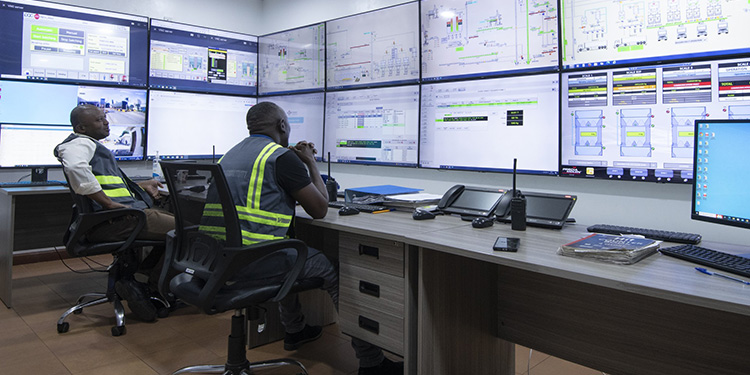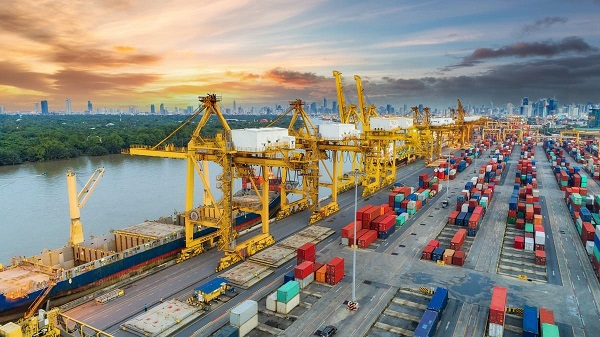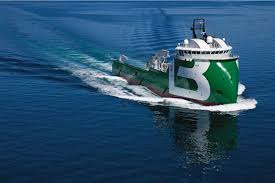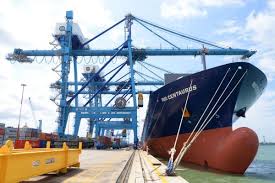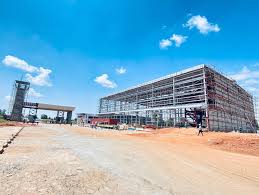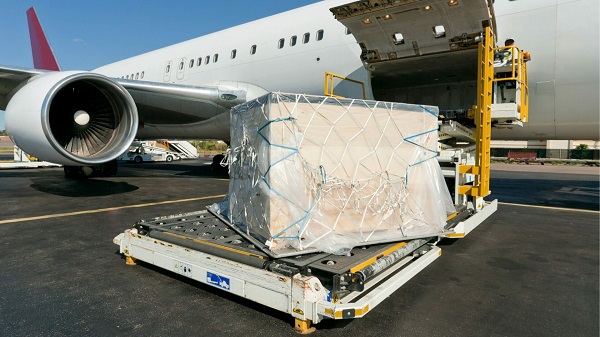The launch of commercial freight services in 2018 provided a platform for Bulkstream to extend its supply chain solutions, culminating in the establishment of the Embakasi Grain Terminal.
n just 20 short years, dry cargo handling at the Port of Mombasa has undergone a complete revolution—from a slow, manual process into an efficient, automated, and sustainable logistics hub.
In such a short time, achieving such a development is not a mean feat.
This historic shift is the result of Bulkstream’s efforts to cement the port’s status as the premier gateway to East and Central Africa. After securing the wayleave to connect its state-of-the-art facilities to the port terminal—a milestone more than a decade in the making—Bulkstream has ushered in a new era of precision and efficiency.
A Visionary Beginning
Founded in 2000, Bulkstream embarked on a mission to modernize freight and forwarding services, initially specializing in cereals. At a time when manual cargo handling was plagued by inefficiencies, high costs, and losses, the company’s founders envisioned a cutting-edge facility to optimize grain importation processes. Through unwavering commitment and significant investment, Bulkstream has grown into East Africa’s leading provider of dry cargo handling, storage, and transportation services. Its advanced systems, including automated grain conveyors, ship unloaders, and high-capacity silos, have drastically reduced unloading times, lowered operational costs, and curbed grain losses, while bolstering food security across the region.
Leveraging Modern Infrastructure
A pivotal milestone in Bulkstream’s journey was its integration with Kenya’s Standard Gauge Railway (SGR).
“The launch of commercial freight services in 2018 provided a platform for Bulkstream to extend its supply chain solutions, culminating in the establishment of the Embakasi Grain Terminal,” said Jared Locklear, Chief Operating Officer.

With a $250 million investment in SGR-related operations, Bulkstream has propelled Mombasa Port ahead of regional competitors. The Embakasi terminal seamlessly connects to Bulkstream’s Mombasa facility, enabling the efficient handling of grain, edible oils, clinker, and fertilizer away from the congested quayside. This infrastructure has brought transformative benefits, improving unloading speeds and reducing transit times.
The system has also enhanced security by eliminating cargo pilferage and contamination, streamlining processes for reliable bulk storage and distribution, and reducing demurrage charges for importers.
Impressive Capacity and Regional Reach
Bulkstream’s storage facilities showcase its ability to meet rising demand. In Mombasa, Bulkstream has a capacity of 220,000 metric tonnes for grain and 45,000 metric tonnes for edible oil. In the Embakasi terminal, the capacity stands at 134,000 metric tonnes for grain and 35,000 metric tonnes for edible oil. By 2024, Bulkstream expects to handle over 4.2 million tonnes of cargo annually, well within its installed capacity of 6.5 million tonnes.
The company’s services extend to key regional markets, including Uganda, Rwanda, South Sudan, the Democratic Republic of the Congo (DRC), Southern Ethiopia, and the Indian Ocean Islands. Notably, Uganda accounts for 25% of Bulkstream’s volumes, supported by a 20,000-metric-tonne grain storage facility in Jinja.
Competitive Edge and Sustainability
Bulkstream’s investments in clinker and fertilizer handling facilities have further solidified Mombasa’s competitive advantage. Unlike conventional methods reliant on manual unloading and truck-based transport, Bulkstream employs enclosed conveyor systems that reduce costs by $5 to $7 per tonne and minimize air pollution and material spillage. The system has also boosted efficiency to 15,000 metric tonnes per day, compared to 2,000 metric tonnes via traditional methods.
“For regional importers, particularly those using the DaresSalaam Port, the cost savings can reach up to $12 per tonne—a striking testament to Mombasa’s enhanced appeal as a trade hub,” said Locklear.
Equally noteworthy are Bulkstream’s environmental initiatives. The company’s enclosed discharge systems and dust extraction processes significantly reduce emissions, while its adoption of rail transport cuts carbon footprints. A single SGR train replaces 100 trucks, slashing fuel consumption from over 40,000 liters to just 3,000 liters per trip.
A Vision for the Future
Bulkstream’s strategic investments are driven by a commitment to anticipate and meet future market demands.
Locklear underscores this forward-looking ethos: “We are focused on understanding market needs and investing ahead of cargo growth. When we began operations, the port handled only 450,000 metric tonnes of cereals annually. Today, this figure exceeds 3 million metric tons, and the opportunities remain immense,” he said.
“By designing infrastructure to remain viable for the next 50 years, phased in 15-year development cycles, Bulkstream is positioning itself as the cornerstone of East Africa’s trade ecosystem.”
Conclusion
Through innovation, investment, and a commitment to sustainability, Bulkstream has redefined dry cargo handling at Mombasa Port. Its modern infrastructure and strategic integration with the SGR have not only boosted efficiency and reduced costs but have also solidified Mombasa’s position as the region’s preeminent trade gateway. With a steadfast focus on long-term growth, Bulkstream is poised to address the logistical challenges of today while paving the way for East Africa’s trade future.

